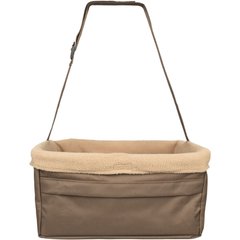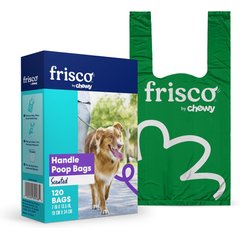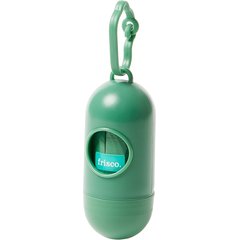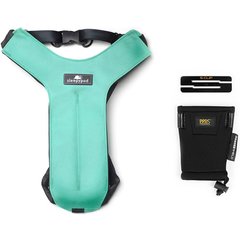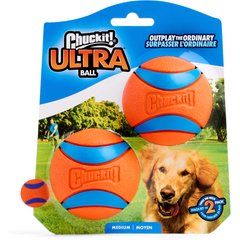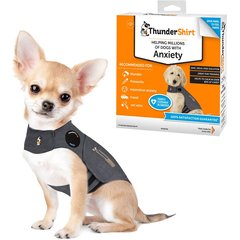11 Tips for Surviving Road Trips With Your Dog
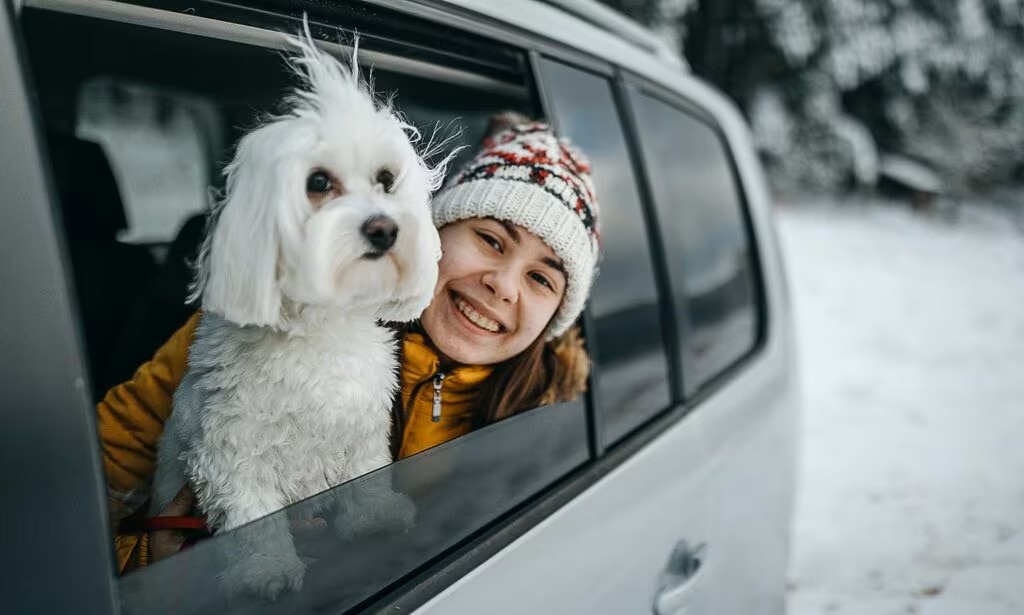
Photo by mixetto/E+
Have you been dreaming of your next road trip? While traveling with your dog is always a fun and memorable adventure, longer road trips with a dog can also be challenging. Dogs can get restless and behave in ways that aren’t safe, like hanging out of the window or jumping into your lap when you’re cruising at highway speeds, and perhaps you’re wondering how to road trip with a dog.
So, how can you make sure that both you and your dog stay safe and happy during long-haul road trips this holiday season? We rounded up experts’ top tips for car trips with dogs. Don’t hit the road without them!
11 Tips for Planning a Road Trip With a Dog
1. Plan a Pet-Friendly Route
Whether you’re just driving an hour or two or taking a cross-country road trip with your dog, you’ll have to plan around your pup’s needs—and that means pulling over for potty breaks and exercise. Check to make sure your route has plenty of safe places to let your pet stretch their legs.
“Most major rest stops have dog areas for them to go to the bathroom, stretch their legs, and play,” says Dana Falsetta, CPDT-KA, a dog trainer and animal services manager at the Animal Welfare Society in Kennebunk, Maine.
2. Take Practice Trips Ahead of Time
Some dogs and road trips don’t mix, but training can help. If you know that your dog is particularly anxious during car rides, consider trying behavioral training techniques.
Before traveling with dogs in the car for a long distance, take some short practice trips that end in positive experiences for them, Falsetta recommends.
Rides to the dog park or a favorite pet store, for example, will help form more positive associations with riding in the car. (In other words, don’t limit your car rides to visits to the vet!)
3. Check With Your Vet
Is your pet healthy enough to travel? You won’t know for sure unless you talk to your veterinarian.
If your dog has existing health issues, ask about how travel may affect them, and make sure your dog’s vaccines and flea and tick preventives are up-to-date, advises Chewy’s resident vet, Katy Nelson, DVM.
This is also an opportunity to ask your vet about anti-nausea or stress-reducing aids that may be useful to your pet during your drive (more on that later).
4. Pack the Essentials
Bring these dog road trip essentials:
- Your dog’s food and water
- Dog treats
- Your dog’s medicines, if they take any regularly
- Dog toys
- Dog food bowl
- Dog water bowl
- Dog bed
- Dog poop bags
- Pet grooming wipes
- Dog first-aid kit
Eliza O’Callaghan, BSc BVMS, managing veterinarian at Small Door Veterinary, shares the following list of items that you should always include in a first-aid kit for your dog:
- Pet first-aid book
- Digital thermometer
- Spare leash
- Flashlight
- Wound care
- Sterile gauze pads and rolls
- Non-stick bandages
- Adhesive tape
- Antiseptic wipes
- Hydrogen peroxide
- Antibiotic ointment
- Scissors
- Tweezers
- Instant cold pack
- Disposable gloves
- Your vet’s contact information, including an emergency vet clinic
Recommended Products
5. Protect Your Dog—and Your Car
When it comes to dogs and car travel, your pet’s safety comes before everything else.
Falsetta recommends using a dog sling or hammock in the back seat to create a safe and comfortable space for your travel buddy.
These tools can keep your pet safe in the car—and may also save your car’s upholstery from fur and claw marks.
The Frisco® Water-Resistant Hammock Car Seat Cover keeps messes off your seats and is even machine-washable in case of any big spills. A car seat, like the Frisco® Dog Bucket Booster Seat, can give smaller pets a better view from the window while keeping them safe and secure.
Either way, protecting your car will help you keep your eyes on the road, instead of checking the back seat to make sure your pup isn’t chewing the armrest—and that keeps both of you safe.
Recommended Products
6. Wear Out That Dog!
A tired dog is often a well-behaved dog, so right before you embark on your trip, Falsetta suggests taking your pet for a long run or a visit to the dog park.
“This should help your dog feel more rested and maybe even sleep for a portion of the trip,” she says.
7. Keep Your Dog Entertained
To make the ride easier for you both, you will want to keep your dog entertained and engaged. Your best bet? “Bring your dog something to chew on,” Falsetta says.
A favorite chew toy will keep your dog busy—plus, it’ll prevent them from chewing on the car’s seat belts, a favorite pastime of many canine road warriors, she says.
A tug toy to play with at rest stops is also a must. Tug-of-war sessions wear out dogs both physically and mentally, Falsetta says, which will help them rest between pit stops.
Dog disc toys or fetch toys will also get your dog moving, “but they should only be used at rest stops that offer your dog lots of space to run around,” and ideally someplace fenced in, adds Vachon. “Not just a big parking lot.”
Recommended Products
8. Stay Safe at Gas Stations
Anytime you’re around moving vehicles (like when you’re at the gas station), your dog should stay inside your car at all times. Make sure they’re secured to prevent them from jumping out unexpectedly.
9. Don’t Ignore Your Dog’s Nerves
If you notice your dog is stressed or anxious while riding in the car, Falsetta suggests using dog-friendly, natural, stress-reducing remedies.
Pressure wraps, like a Thundershirt®, or supplements, like Vibeful™ Calming Melatonin Soft Chews Supplement, are designed to help reduce stress in dogs.
Recommended Product
10. Take Frequent Breaks
You need to take breaks when you’re cooped up in the car for extended periods of time, right? So does your canine companion. Falsetta recommends anywhere from two to three hours between pit stops.
“Your dog may have regained his energy after your last play session,” she says. “So use these breaks as a time to play, engage, and give attention to your dog.”
11. Bring Info Along
It’s wise to carry your dog’s ID and medical info with you when you go on a road trip, just in case they experience an illness or—in the worst-case scenario—go missing. It’s important to ensure that their microchip is updated as well.
“I always recommend having proof of rabies vaccination accessible in case your dog gets in a tussle with another dog or human,” says Antje Joslin, DVM, Dogtopia veterinarian. “Some local ordinances require your dog to have proof of immunization if requested.”
FAQs About Road Trips With Dogs
Q: How often should you stop on a road trip with dogs?
A: During a long drive, it’s best to stop every two to three hours to allow your dog to stretch, relieve themselves, and have some water. Regular breaks help keep your dog comfortable and prevent restlessness.
Q: How long is too long for dogs to be in the car?
A: The length of time that your dog is in the car can vary by individual dog. In general, dogs should not be in the car for more than four hours without a break. Long periods in the car can cause discomfort and stress, so frequent stops are important.
Q: What should I feed my dog before a road trip?
A: Before heading out on your road trip with your best friend, it’s smart to stick to their usual dog food and eating schedule as much as possible. You can also plan to feed your pup a light meal a few hours before the trip, which may help decrease the risk of car sickness.
Q: What are some tips for road trips with puppies?
A: Follow these expert tips for taking a road trip with your puppy.
- Start with short trips to get your puppy accustomed to car travel.
- Use a secure kennel or harness to ensure their safety.
- Plan for frequent stops, as puppies need to relieve themselves more often.
- Keep them hydrated and provide small amounts of food at intervals.
- Keep them on a leash, even in seemingly safe or off-leash areas.
- Regularly check the fit of your puppy’s collar to ensure they can’t accidentally slip away.
- While your pup is safe and secure in your car, offer a new toy or teething chew to combat boredom and help pass the time.
This content was medically reviewed by Chewy vets.
Kae Lani Kennedy contributed to this article.
